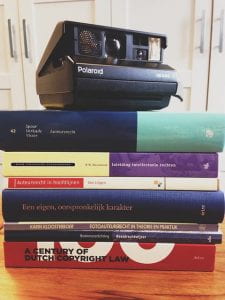As ETL503 comes to a close I look back at how far my understanding of the TL role has come. As I outlined on 20th May 2019, I have recently moved into the library, taking over from the TL of the past 15 years. From observing her the library role appeared to be mostly taking care of circulation, promoting reading for pleasure and very occasionally purchasing new books. I did not even know that I should be looking for policies and procedures until undertaking this subject and once armed with this knowledge and searching commenced… there was nothing to be found.
I am excited by the prospect of what our library could become and to be given the opportunity to lead the development. As Giovenco (2019, para. 27) asked in his Week 11 announcement “can you any longer afford to play the functionary and/or shrinking violet in your school?”. The answer is a resounding ‘no’! I definitely need to make a shift in our school communities thinking by “pushing my professional positioning through evidence of my effective professional practice” (Giovenco, 2019 parp. 29)
I now know I need to start with a thorough collection analysis and survey staff, students and community on what they expect/want from our library (National Library of New Zealand, n.d. b).
From here, the mission of our library and the goals for our collection can be developed and then written into the collection development policy. It is this document that will underpin and validate the collection update that is so needed. Knowing that this is a document that will be regularly reviewed and updated ensures the future of our collection. We do not want to find ourselves at this point again.
Even before completing the collection analysis, I can see that there are big changes that need to be made. There is quite a substantial physical collection, however much of it is incredibly dated and worn. I have no doubt that it is becoming a distraction rather than an asset (Dillon, 2001) and hiding the quality resources that are there. A thorough weed of the physical collection is in order but only once analysis and policy writing is complete so as to validate and frame weeding in a positive rather than negative light to users (Dillon, 2001).
This weed is in no way being planned to reduce or diminish the physical collection, rather to enhance it. As while Shatzkin (2016 in Tully, 2019) discusses the general shift in publishing toward Ebooks, schools, particularly primary schools as the one I am at, still use, value and enjoy the physical book. Tully (2019) reports similar findings and like her, I too have seen the joy of students when the annual book fair rolls in. In addition, as Rule (2019) points out and I concur with (15 March 2019) the NSW syllabus requires students study spoken, print, visual, media, multimedia and digital texts. The physical collection cannot be thrown out with the bathwater.
This demand for a variety of texts (NSW Education Standards Authority, 2012) does, however, also support the necessity for a balanced collection (National Library of New Zealand, n.d. a). The digital collection must also be built up (currently non-existent in our library). In my post 15 March 2019 I shared some of the benefits of digital resources to primary school children as outlined by Kucirkova (2018).
Irving (2019 in Lynch, 2019) notes that ensuring equitable access to the collection for all is also an important consideration and the digital format is one way of helping address this.
Irving (2019 in Lynch, 2019) also identify locating and updating the school’s copyright permissions as a priority. My post (4 May 2019) outlines my total lack of knowledge in this area and some of the key takeaways for me in regards to my role in assisting the principal with legal compliance. This is something I have already put into practice, using the smartcopying website to justify a change in procedure.
I have been pleasantly surprised by the practical skills and knowledge I have developed through this subject and look forward to putting it into practise and leading an upgrade of our library to better meet the needs of our staff, students and community.
References
Dillon, K. (2001). Maintaining collection viability. In K. Dillon, J. Henri & J. McGregor (Eds.), Providing more with less: collection management for school libraries (2nd ed., pp. 241-254). Wagga Wagga, NSW: Centre for Information Studies, Charles Sturt University.
Doherty, H. (2019, March 15). RE: Shatzkin [Online forum comment]. Retrieved from https://interact2.csu.edu.au/webapps/discussionboard/do/message?action=list_messages&course_id=_42383_1&conf_id=_78886_1&forum_id=_147529_1&message_id=_2180284_1&nav=discussion_board_entry
Doherty, H. (2019, May 4). Copyright [Blog post]. Retrieved from https://thinkspace.csu.edu.au/learningtolibrary/2019/05/04/copyright/
Doherty, H. (2019, May 20). Creating a collection development policy [Blog post]. Retrieved from https://thinkspace.csu.edu.au/learningtolibrary/2019/05/20/creating-a-collection-development-policy/
Giovenco, G. (2019, May 12). Week 11 [Online announcement]. Retrieved from https://interact2.csu.edu.au/webapps/blackboard/execute/announcement?method=search&context=course_entry&course_id=_42383_1&handle=announcements_entry&mode=view
Lynch, M. (2019, May 18). Digital content within a collection development policy [Blog post]. Retrieved from https://interact2.csu.edu.au/webapps/discussionboard/do/message?action=list_messages&course_id=_42383_1&nav=discussion_board_entry&conf_id=_78886_1&forum_id=_147542_1&message_id=_2294288_1
National Copyright Unit (n.d.). Smartcopying. Retrieved from http://www.smartcopying.edu.au/
National Library of NZ. (n.d. a). Collections and collection management. National Library of New Zealand Services to Schools. Retrieved from https://natlib.govt.nz/schools/school-libraries/collections-and-resources/collections-and-collection-management.
National Library of NZ. (n.d. b).Working out your library’s collection requirements. National Library of New Zealand Services to Schools. Retrieved from https://natlib.govt.nz/schools/school-libraries/collections-and-resources/collections-and-collection-management
NSW Education Standards Authority. (2012). English K-10 Syllabus. Retrieved from https://syllabus.nesa.nsw.edu.au/download
Kucirkova, N. (2018). How and why to read and create children’s digital books: A guide for primary practicioners. UK:UCL Press.
Rule, M (2019, March 15). Re: Shatzkin [Online forum comment]. Retrieved from https://interact2.csu.edu.au/webapps/discussionboard/do/message?action=list_messages&course_id=_42383_1&conf_id=_78886_1&forum_id=_147529_1&message_id=_2180284_1&nav=discussion_board_entry
Tully, E. (2019, March 8). Shatzkin [Online forum comment]. Retrieved from https://interact2.csu.edu.au/webapps/discussionboard/do/message?action=list_messages&course_id=_42383_1&conf_id=_78886_1&forum_id=_147529_1&message_id=_2180284_1&nav=discussion_board_entry

